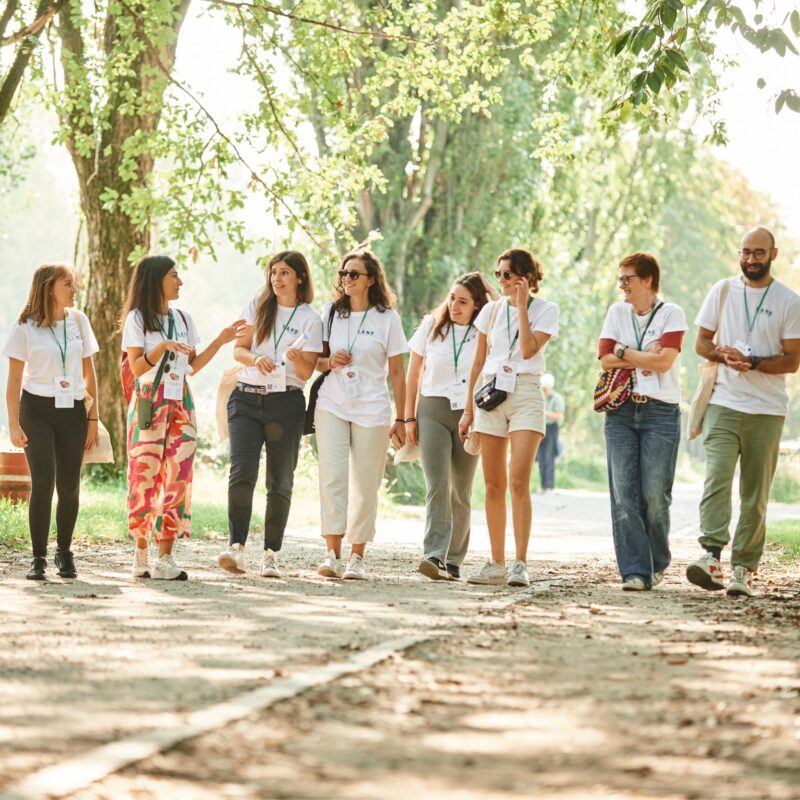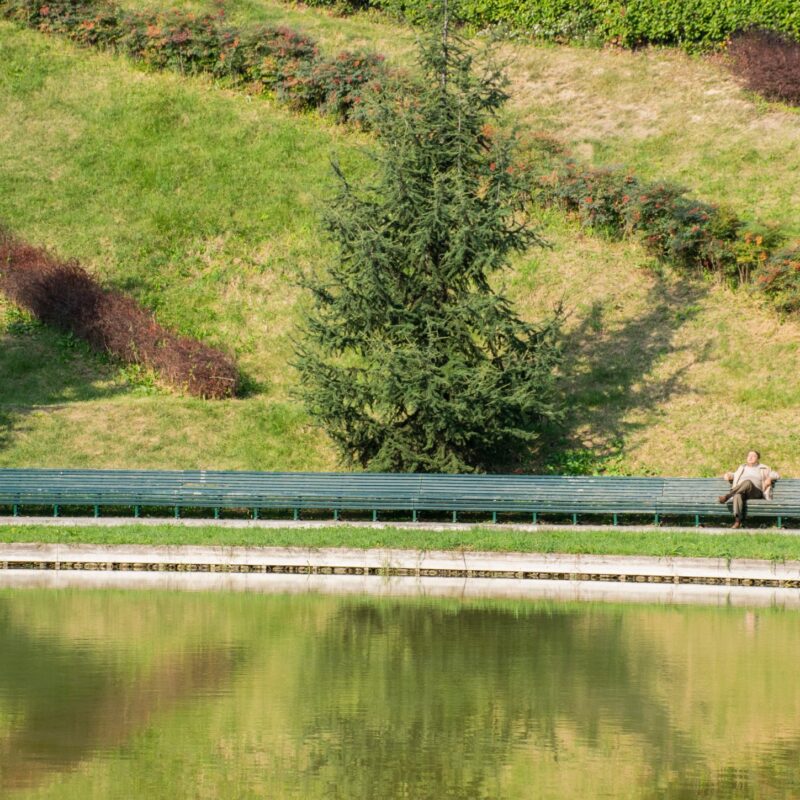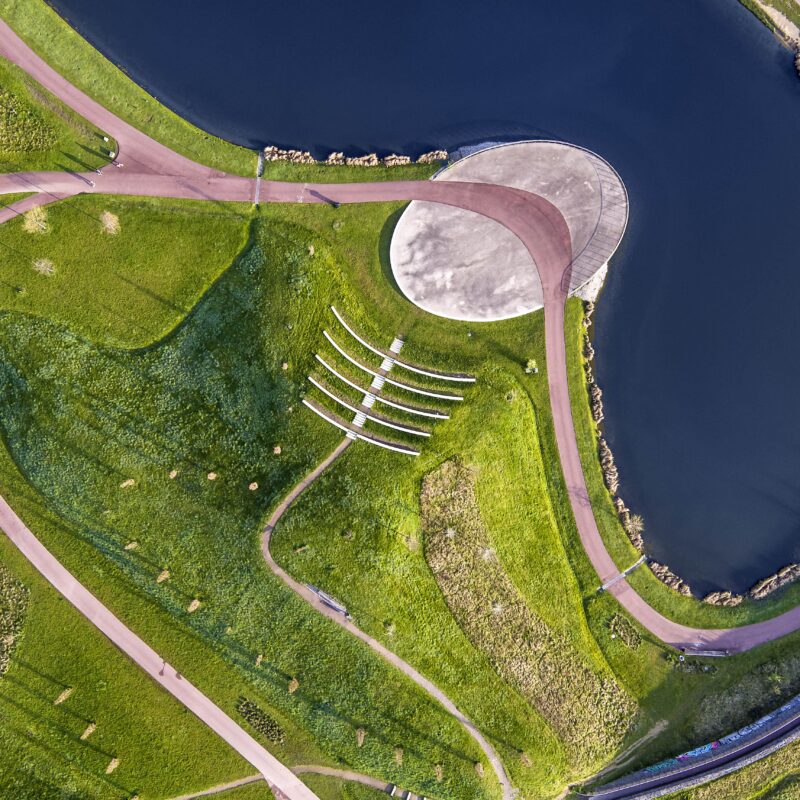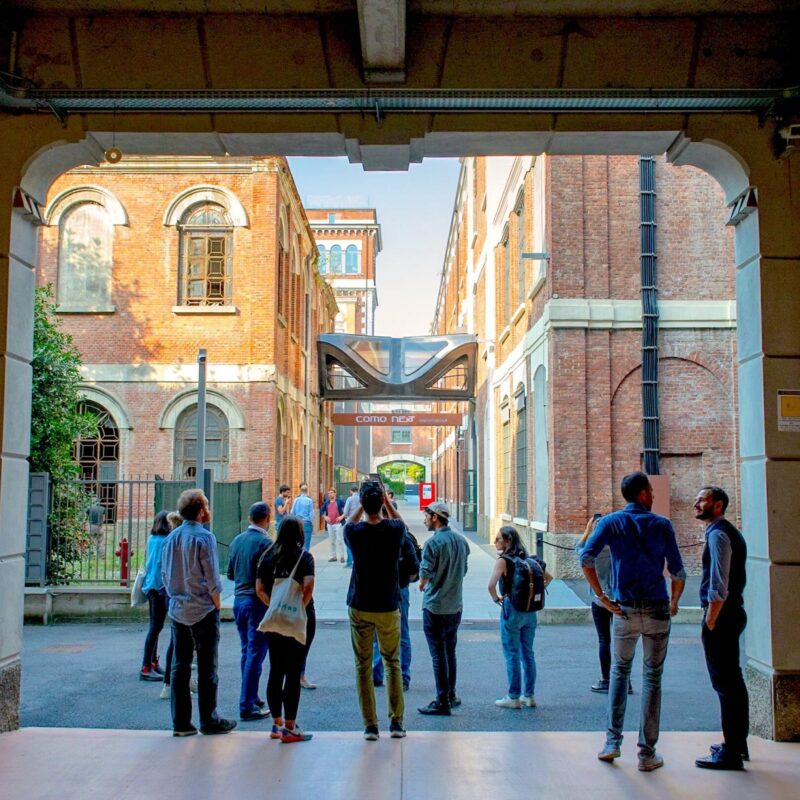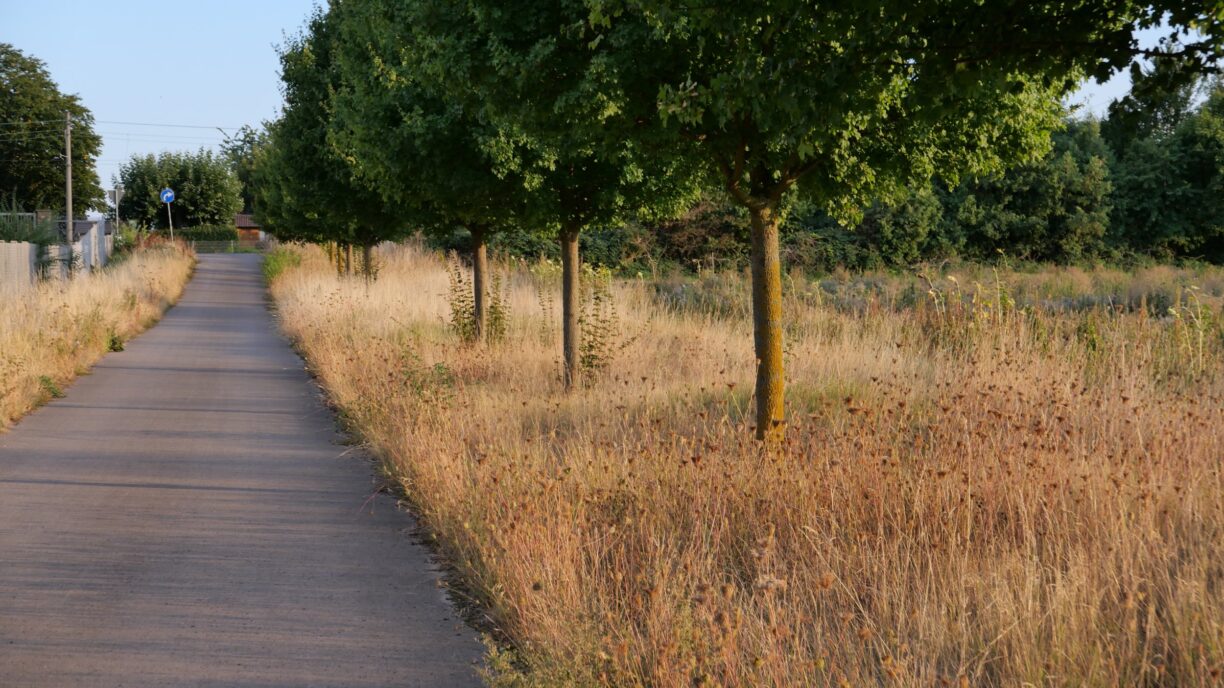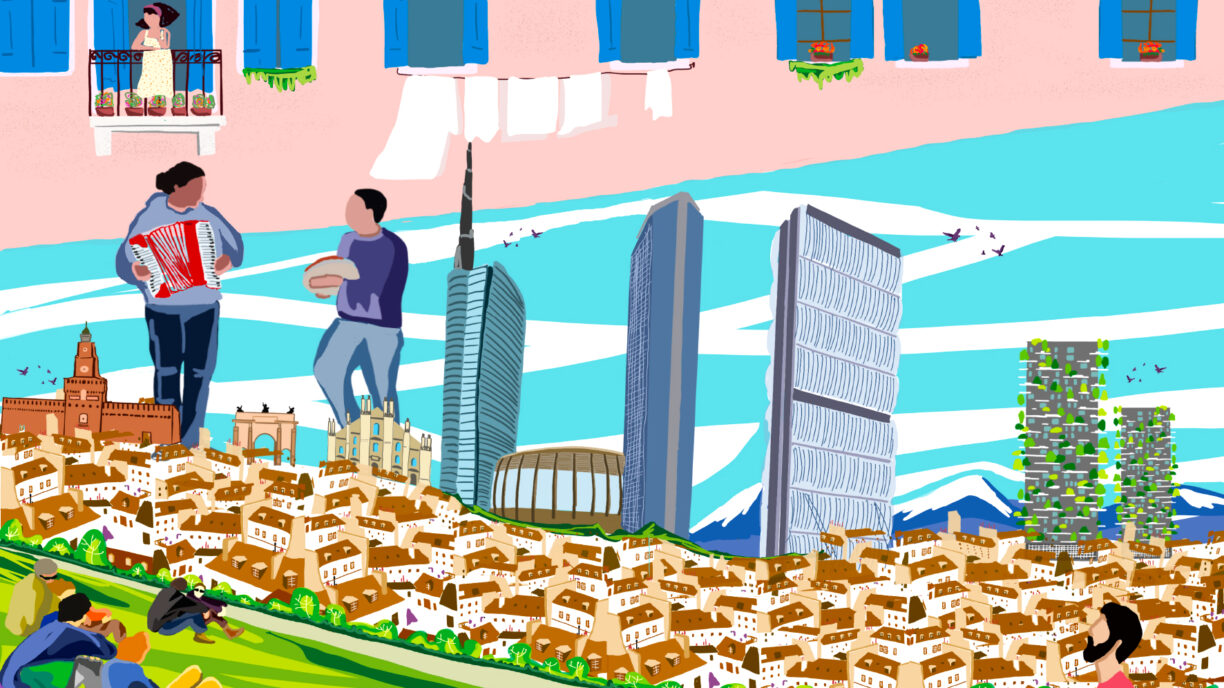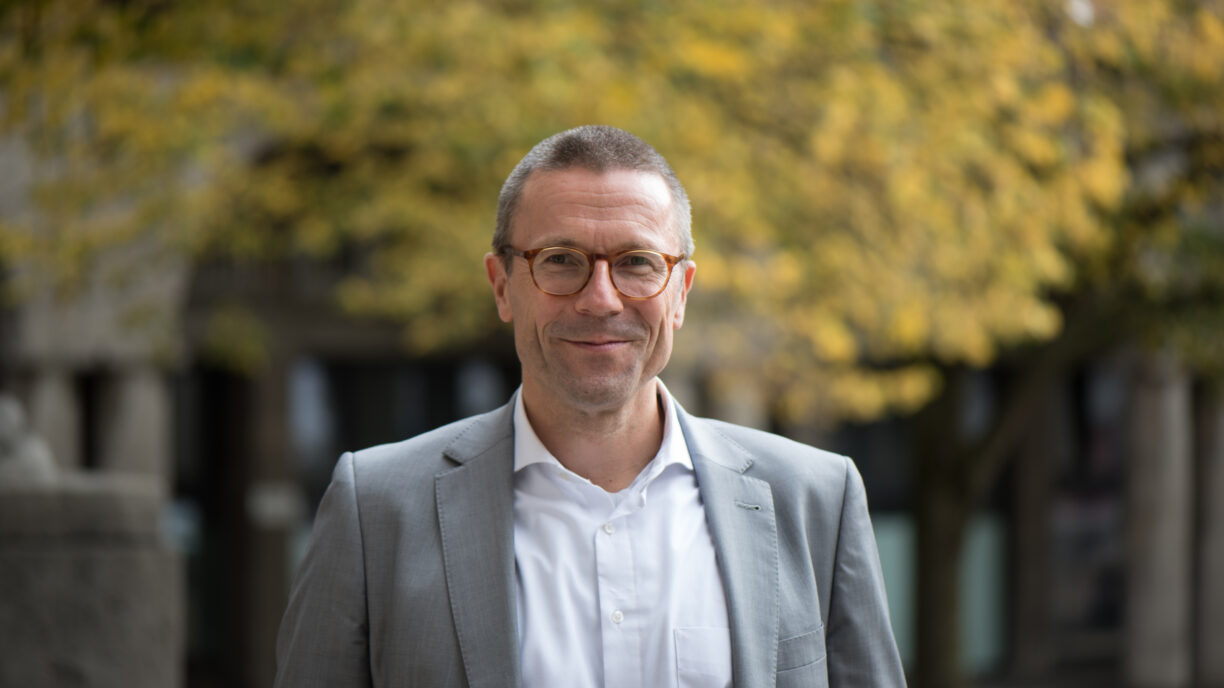
The Landscape, Suspended Between Energy and Future
Edison and the transformation process in close contact with energy and nature.
Edison is an Italian corporate leader in the energy market, with activities that include the supply, production, and sale of electrical energy, natural gas, and energy services. The company was formally established in Milan in January 1884. The partnership between Edison and LAND began in 2020 with one objective: to identify innovative and replicable models of new productive landscapes, capable of activating management processes and raising awareness in the regions where Edison has energy facilities or is planning to build new ones. Attention to the landscape, in terms of its natural, energy, population, and cultural components, offers a concrete opportunity to create a corporate development strategy that shifts the logic of land transformation to sustainable models, focusing on the intelligent use of environmental resources in synergy with energy production systems.
We support programs designed to create social value in local areas in order to contribute to improving quality of life.

Barbara Terenghi (Edison) in front of Ilaria Congia and Andreas Kipar (LAND)
Following Each Other: Innovative Models for Productive Landscapes
Excerpts of a conversation between Barbara Terenghi (Executive Vice President of Sustainability and CEO’s Office Director of Edison) and Andreas Kipar. Moderated by Ilaria Congia.
Edison is the oldest energy company in Europe. In the 140 years of Edison’s history, what has changed about your way of doing energy and your approach to the landscape and region where you have a presence?
Barbara Terenghi (BT): “The energy world has changed a lot: over recent decades it’s had to face challenges related to various issues, especially in the modern world we’re part of and the developed countries we live in. Decarbonization is a very challenging issue, as is digitalizing the energy world. And last but not least is the aspect of energy deployment, the forms of production and consumption that emerge, evolve, and become more widespread. For this reason, over the last seven or eight years, Edison has decided to leave the hydrocarbon production and exploration sector; we’re no longer an oil and gas company, we’ve moved toward energy transition, including renewable energy, where we’ve decided to allocate increasing investments, creating solutions that are of greater value to customers from the standpoint of decarbonization as well as energy efficiency.”
Keeping in mind this evolving dimension of the energy world, we know that we’re now going through quite a difficult economic, ecological and climate situation where it’s increasingly urgent for us to rediscover the primordial relationship between humans, nature and energy. And we know that we can initiate this process of rediscovery primarily by developing new productive landscapes. When can a landscape be considered productive?
Andreas Kipar (AK): “Let me follow up on what Barbara Terenghi just said: tradition and transformation over time. Productivity is now returning to center stage as the landscape itself is able to ‘provide stimulation.’ We all come from a time when more than anything else, landscape was a beautiful aspect of the past that was supposed to be preserved. To change this approach, three extraordinary events had to happen: first the pandemic, then the war and the consequent energy crisis, and then the climate issue, which was already there but is now evolving and becoming more urgent every summer.
Today we find ourselves in a dimension where landscape is back in the picture, often taking the form of an energy landscape. I see a lot of parallels with attitudes from the time when Edison was founded: electric power plants were something to be proud of, they were the future, like trains were in the field of mobility. More recently, there was sometimes a desire to reject, to almost hide power plants. Today energy has become something to be proud of again. The ethical dimension of renewables must necessarily also produce new aesthetic forms. When a landscape stimulates the desire to explore, then it’s already productive.”

What steps is Edison taking to contribute to both Italian and European decarbonization goals?
BT: “Edison is strongly committed to and involved in decarbonization, which also encompasses energy security and the economic sustainability of energy spending. These are the three legs of a hypothetical triangle that needs to be balanced. In particular, in 2021 we made a public commit ment to multiyear sustainability goals to 2030, and we also want to contribute to reducing emissions for our customers. We really wanted to take advantage of one of our companies, Edison Next, which is focusing on these issues, with selfgeneration of renewable energy and assistance to industrial customers and public administrations in moving toward decarbonization and innovative energy models.
We’re very aware of this issue, and we’re also part of a global group that’s making these carbon-neutral targets a fundamental commitment, with the goal of reaching carbon neutrality in 2050. So we’ve got the best road map for our energy mix and that of the country.”
What strategic role could natural capital play, not only in your mission and in managing your processes, but in your future investment plans as well?
BT: “First of all, we see that natural capital is becoming more and more crucial in the developments that energyclimate plans contemplate, including at the country level. There’s more attention to the country’s environmental and energy policies broadly speaking, so the issue of natural capital, expectations related to the landscape on one hand and nature on the other, are also increasingly relevant. Restore Nature, a European Union law, will certainly be implemented in Italy as well. Obviously, it won’t prevent development of new renewable energy, however companies will have to comply with it and make it the basis for advanced development. Natural capital has become part of the industrial development equation, and now it’s not just something nice to have, but is one of the rules of the game.”
From the perspective of landscape and landscape architecture, what opportunities can we seize as we quantify natural capital, that is make it concrete, make it tangible, make it measurable?
AK: “Energy, which championed industrial development, is now championing the transition to a new era. In terms of natural capital, landscape is once again the moderator, because in the end, all our actions become visible. Landscape as human being. Closeness to communities isn’t achieved through the territory but through landscapes. Identity lies there.
When we talk about energy landscapes, we mean quantitative energy landscapes; we’ve seen and we’re well aware of the extent of your facilities; this is the starting point for exploring new territories, for understanding how to act with energy that’s become a driver again, this time in terms of sustainability. The landscape becomes productive again, and at the same time, society itself assumes a productive dimension around energy landscapes, this is the most important aspect.”

Edison and LAND have been solid partners for a few years now. What new perspectives has LAND brought to your company and your processes?
BT: “Having a partner with international experience has been crucial for us, because they can be brought into projects that we consider strategic, and above all enable their realization. This leads to the dimension of implementation, where things happen, and helps advance a message in regional and local contexts in order to raise awareness of why the energy work we want to achieve improves that territory, and allows us to highlight our mission.
The other element I find in LAND is the dimension of vision, a new vision of natural capital, which then enters the dimension of productive land scape to which the energy theme is attached.”
To conclude: Andreas Kipar, what is LAND learn ing from a player like Edison?
AK: “Collaboration arises from trust and necessity. When we join forces, the credibility you’ve gained in the region over 140 years also increases the credibility of landscape culture, something we could not accomplish alone. Let’s always remember that fundamentally, we are the landscape, because even when a landscape is formed by private parties, it always becomes public again. This is a process that we’re now cultivating together, and it leads us to many environments, settings, regions.
Let’s not forget that together we’re also creating new forms of work for the next generation, jobs that are no longer the classic socially useful ones, but those that promote and assist in the restoration of nature. The sum of all this means energy. Today we’re learning together how to follow a path, and tomorrow we can also learn together how to create a partnership model that ennobles those who follow it.”
BT: “You think you’re following us, while at the same time we think we’re following you. Each of us has faith in the path that the other is forging. That’s how it works, and I think that’s how it’s supposed to work.”
AK: “We take turns. This is a good conclusion, a symbol of reciprocity.”
The conversation took place in July 2023 at Edison’s head office in Milan.

This is how it all began: historic waterworks on the Adda River. Photo © Edison
The New Frontiers of RES (Renewable Energy System)
Hydroelectric, Wind, and Agrivoltaic
Hydroelectric: a Key Role
The first power plants in Italy in the late 1800s, built along the river Adda, ushered in Italy’s process of electrification, guaranteeing economic development and the growth of the entire nation. Now we stand at a complex moment in history, marked by a sharp transition, as we lay the foundations for a new paradigm to undergird a society that will be very different, including in terms of energy.
Today, hydroelectric is the primary programmable renewable energy source, capable of guaranteeing a balance between supply and demand by stabilizing the national electric grid and preventing potential breakdowns. In addition, it plays an important role in regulating water, which has become an increasingly pressing issue over recent years as extreme weather conditions become more common, from periods of drought to very heavy rainfall over just a few hours. These issues have made this area particularly strategic.
Wind: Synergy
The relationship between wind farms, the land, and their maintenance is one of the thorniest issues we have faced over recent years as an energy operator.
Due to the very nature of wind energy, wind farms are primarily concentrated in southern Italy. For years, working closely and synergistically with local institutions and communities, we have been committed to identifying plant management models that make them compatible with the local landscape and can guarantee the rise of a local economic sector specialized in their maintenance. Thus, wind energy as not just a renewable energy infrastructure, but as a true driver of economic, social, and cultural development for local areas.
Agrivoltaic: Betting on Integration
Today, agrivoltaic represents an opportunity. Like every renewable energy plant, it needs to be appropriately integrated into the local area so that it can become an occasion for sustainable economic and environmental development. In particular, the advantages of ground-mounted photovoltaic systems include the ability to repurpose uncultivated or even abandoned agricultural land. The possibility of integrating the production of electrical energy through photovoltaic systems along with agricultural or livestock use makes the land more profitable. The energy and ecological transition is based on numerous technologies, some more traditional, some more innovative. Agrivoltaic is certainly one of the latter, and is as necessary as the former in order to achieve the goals we’ve set ourselves for the near future.
Text: Marco Stangalino, Director of the Power Asset Division of Edison
Energy Pathways
To experience and explore new energy landscapes means making them an integral part of the experience of using a region. Thus, the “Energy Pathways” format becomes a concrete tool for linking natural and cultural assets with existing and planned hydroelectric, wind, and photovoltaic facilities in Italy.
This format is characterized by a series of interventions aimed at the enhancement, redevelopment, and improvement of existing slow mobility routes, generating a multiplecircuit model that can provide access to the landmarks of the cities concerned, drawing in local governments, citizens, and stakeholders. In addition, the identified pathways include scattered rest areas, new plantings, and a system of signs and coordinated communication that makes these interventions clearly recognizable.
Inserting the Pescopagno Pumped-Storage Hydropower Plant into the Landscape
The project in Pescopagano (PZ) is a pioneer of similar projects that Edison is advancing in southern Italy. It provides for the creation of a new downstream reservoir connected to the existing Lake Saetta via underground waterways. The landscaping plan conceives the landscape as an active value that has the potential to become a prime place for innovation.
Following an examination of the region’s propensities and particular features, the facility’s aboveground works are minimized through the use of local colors and natural materials, forms that follow the shape of the land, renaturalization of degraded areas, and the use of local vegetation, integrating the project into its sensitive surroundings. The “Energy Pathways” format, applied as a way to offset impact, makes the plant an activator of new local synergies, rekindling the energy of the region.
Text: Benedetta Falcone, Ilaria Giubellino, Beatrice Magagnoli, LAND

Masterplan for Pescopagano pumped storage hydro power plant conceiving landscape as an active value that has the potential to become a prime place for innovation
Creating Value for Local Regions
Two questions for Elena Guarnone, Head of Sustainability
What learnings and challenges are involved as you seek to measure natural capital and develop innovative and replicable models of approach in your company processes?
“The methodological and legal framework for natural capital is complex and detailed. The mitigation hierarchy includes a series of steps: anticipate, avoid, minimize, and in case of residual impact, balance the risks and impact to nature. The applicable international frameworks and EU laws being adopted focus on the goals of No Net Loss or Net Gain of biodiversity.
Companies must reckon with increased environmental sensitivity and a broader vision of sustainability, yet must also employ an approach for their business activities and processes that achieves clear governance of the issue.
In this regard, measuring the effects of your actions, using best practices, identifying models that are innovative yet replicable (like new productive landscapes where energy plays an increasingly important role), and creating synergy with stakeholders in your places of operation, become indispensable tools to effectively and positively contribute to natural capital.”
Edison’s presence in Italy, in terms of electrical generation facilities, primarily involves domestic areas, affecting a significant part of the country. What actions is Edison taking to improve the local environment?
“Strengthened by its strong and in some cases historic presence in Italy, and firmly embedded in the local socio-economic fabric, Edison is committed to maintaining and continuously reinforcing solid relationships with local stakeholders. With an eye to creating shared value, the company approach to relationships with the local region and its communities is based on: listening to needs and expectations, developing shared solutions and enabling local development, supporting various types of local initiatives, promoting an energy culture for communities, bringing in local suppliers, and protecting and safeguarding the local region.
In 2022, 60% of the communities in which Edison operates through electricity-generating sites were involved in local projects through socio-cultural, educational, environmental, and athletic initiatives in about 2/3 of the Regions. Along with that, solidarity energy sustainability initiatives were launched in collaboration with third sector organizations for Solidarity Energy Communities, through the Banco dell’Energia Foundation Philanthropic Entity and Edison EOS Foundation.”
Read other Articles from this Edition
